 Tasting No 264 – April 30, 2024 – Wines from Piedmont
Tasting No 264 – April 30, 2024 – Wines from Piedmont
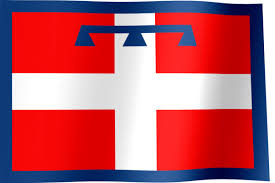
-
Tasting overview
The main objective of this tasting is to explore the wines from the Piedmont area, particularly the famous Barolo and Barbera wines.
Type of tasting: open.
Presenters: José Brakarz, Raimundo Arroio and Marcia Bebiano Simões
The Wines:
- Bruno Giacosa Roero Arneis, 2022
- D. Vajra Barolo Albe, 2019
- Paitin Barbaresco Serraboella, 2020
- Paolo Scavino Barolo Prapo, 2019.
-
Menu
- Portobello al Forno
- Linguini Frutti di Mare
- Beef Medallions with Brown Sauce and Sauteed Potatoes
- Dessert, coffee, tea.
-
The Piedmont Region
Located in the northwestern corner of Italy, Piedmont (“Foot of the Mountain”) is a region renowned for its exceptional wines. It is a picturesque area with a rich viticultural heritage.
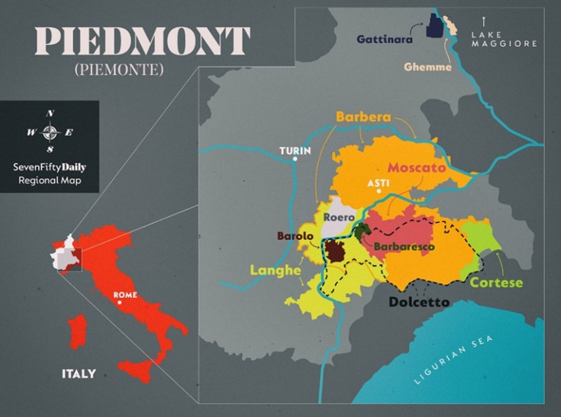 Terroir and Production Areas: Piedmont, the heart of Italian winemaking, has a diverse landscape— comprising hills (30.3%), plains (26.4%), and mountains (43.3%)—which creates a unique terroir that influences its wines.
Terroir and Production Areas: Piedmont, the heart of Italian winemaking, has a diverse landscape— comprising hills (30.3%), plains (26.4%), and mountains (43.3%)—which creates a unique terroir that influences its wines.
The region has a continental climate with cold winters and hot summers, along with significant temperature variations, which allows for late-ripening varieties like Nebbiolo to thrive. Responsible for some of the most elegant and age-worthy wines in the world, Nebbiolo, named for the ubiquitous autumnal fog (called nebbia in Italian), is the star variety of the Piedmont region. Grown throughout the area, as well as in the neighboring Valle d’Aosta and Valtellina, it reaches its highest potential in the Piemonte’s villages of Barolo, Barbaresco and Roero.
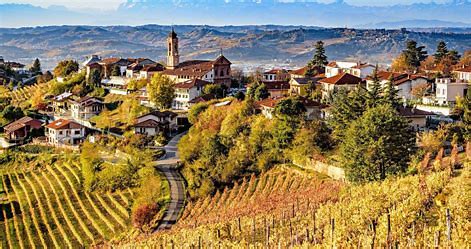 Distinct Production Areas: of Italy’s 20 major wine regions, Piedmont ranks 6th in production volume. It is known for high quality and produces more DOCG designated wines than any other region. In Piedmont there are a total of 59 subregions (including Barolo, Gabiano, Barbera d’Asti, etc.) and the name of these subregions is listed prominently on Piedmont wine labels (often noted alongside the variety). These are some key production areas:
Distinct Production Areas: of Italy’s 20 major wine regions, Piedmont ranks 6th in production volume. It is known for high quality and produces more DOCG designated wines than any other region. In Piedmont there are a total of 59 subregions (including Barolo, Gabiano, Barbera d’Asti, etc.) and the name of these subregions is listed prominently on Piedmont wine labels (often noted alongside the variety). These are some key production areas:
Langhe: Nestled between the provinces of Cuneo and Asti, the Langhe region produces some of Piedmont’s most iconic red wines:
- Barolo DOCG: Known as the “King of Wines,” Barolo is made from Nebbiolo grapes. It boasts complex flavors, robust tannins, and aging potential.
- Barbaresco DOCG: Another Nebbiolo-based gem, Barbaresco offers elegance, floral notes, and a slightly earlier maturation than Barolo.
- Dolcetto d’Alba and Barbera d’Alba: These approachable reds showcase fruity profiles and pair wonderfully with local cuisine.
Roero: East of the Tanaro River, Roero is famous for its white wine:
- Roero Arneis DOCG: Made from the indigenous Arneis grape, this crisp and aromatic white wine is a delightful companion to seafood and appetizers.
Monferrato: The largest production area in Piedmont, Monferrato spans the provinces of Alessandria and Asti. Notable wine appellations include:
-
- Barbera d’Asti DOCG: A lively red with bright acidity, perfect for everyday enjoyment.
- Gattinara DOCG: A Nebbiolo-based wine from the northern part of Piedmont.
- Ruchè di Castagnole Monferrato DOCG: A rare red with floral and spicy notes.
- Asti Spumante DOCG: A sweet sparkling wine made from Moscato grapes.
- Gavi DOCG: Crisp and mineral-driven white wine crafted from Cortese grapes.
- Timorasso Colli Tortonesi DOC: An intriguing white wine with depth and character.
Other gems include:
- Alta Langa DOCG: Its sparkling wines compete with the best in the world.
- Nizza DOCG: Produces robust Barbera wines.
- Terre Alfieri DOCG: Known for its reds and whites.
- Timorasso Colli Tortonesi DOC: An ancient grape variety making a comeback.
Piedmont’s wines reflect centuries of tradition, dedication, and a deep connection to the land. Whether you savor a bold Barolo or a refreshing Arneis, each bottle tells a story of passion and craftsmanship!
History of Viticulture in Piedmont.
The roots of Piedmont’s winemaking tradition can be traced back to ancient times. The Celtic-Ligurian peoples who inhabited the region around the 6th century BC, were the early vintners, tending to vineyards and nurturing the grapevines. These ancient inhabitants recognized the potential of Piedmonts’ soil and climate for wine production. The Romans cultivated native vines in this fertile land, which they aptly called Oenotrua (meaning “land of vines”).
As the Middle Ages unfolded, attention shifted toward defining the most suitable wine production areas. Barbesino, found its roots in the Monferrato region. Meanwhile, Nebbiolo vines took hold in Turin and Upper Piedmont. These early choices laid the groundwork for the iconic wines that would emerge centuries later.
Birth of Barolo and Barbaresco: In the 19th century, ‘Piemontese’ red wines began to evolve into their modern expressions: Barolo, based on Nebbiolo grapes, came into existence around 1830. The Marquises Falletti and Count Camillo Benso di Cavour played pivotal roles in its creation. Not long after, Barbaresco—another magnificent expression of Nebbiolo—was born. Domizio Cavazza, founder of the Cantine Sociali di Barbaresco, contributed to its legacy.
Challenges and Renaissance: The 20th century brought challenges – World Wars, rural exodus, and migration to the Americas – which led to a decline in viticulture. In the 1980s, the region experienced a renaissance. Inspired by Burgundy and Bordeaux, winemakers embraced modern techniques, aiming for more elegant and balanced wines.
With its proximity to France, Piedmont has been influenced by French viticulture, particularly from regions like Burgundy. This influence is evident today in the varietal styles of most Piedmonts’ wines, which often emphasize single grape varieties with minimal blending.
-
Piedmont’s Main Wine Varieties (DOCG)
White and Sparkling Wines
Although Piedmont is best known for its red varieties, there are some significant white wines produced in the region, such as: Gavi DOCG and the 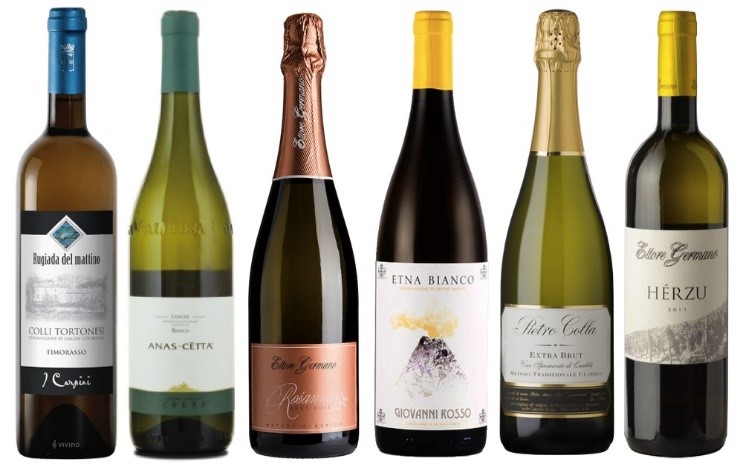 Roero Arneis DOCG (present in this tasting), the “Derthona” Colli Tortonesi DOCG obtained from Timorasso grapes; the Asti DOCG sparkling wine, Moscato d’Asti DOCG and the Arbaluce di Caluso DOCG. Out of the many other denominations in the Piedmont area, the Roero DOCG wines, also made with Nebbiolo grapes, has a completely different identity, with its distinguishing aromatic characteristics given by geographical and climatic conditions, as well as vinification techniques. The geographical position and soil composition distinguishes Roero from its counterparts, as it is located on the left bank of the Tanaro River, while Barolo and Barbaresco are on the right margin. Usually, the left margin is more arid, and its soil has high limestone clay and sand. This composition gives the grapes a particular mineral terroir, highly appreciated for with wines.
Roero Arneis DOCG (present in this tasting), the “Derthona” Colli Tortonesi DOCG obtained from Timorasso grapes; the Asti DOCG sparkling wine, Moscato d’Asti DOCG and the Arbaluce di Caluso DOCG. Out of the many other denominations in the Piedmont area, the Roero DOCG wines, also made with Nebbiolo grapes, has a completely different identity, with its distinguishing aromatic characteristics given by geographical and climatic conditions, as well as vinification techniques. The geographical position and soil composition distinguishes Roero from its counterparts, as it is located on the left bank of the Tanaro River, while Barolo and Barbaresco are on the right margin. Usually, the left margin is more arid, and its soil has high limestone clay and sand. This composition gives the grapes a particular mineral terroir, highly appreciated for with wines.
BAROLO
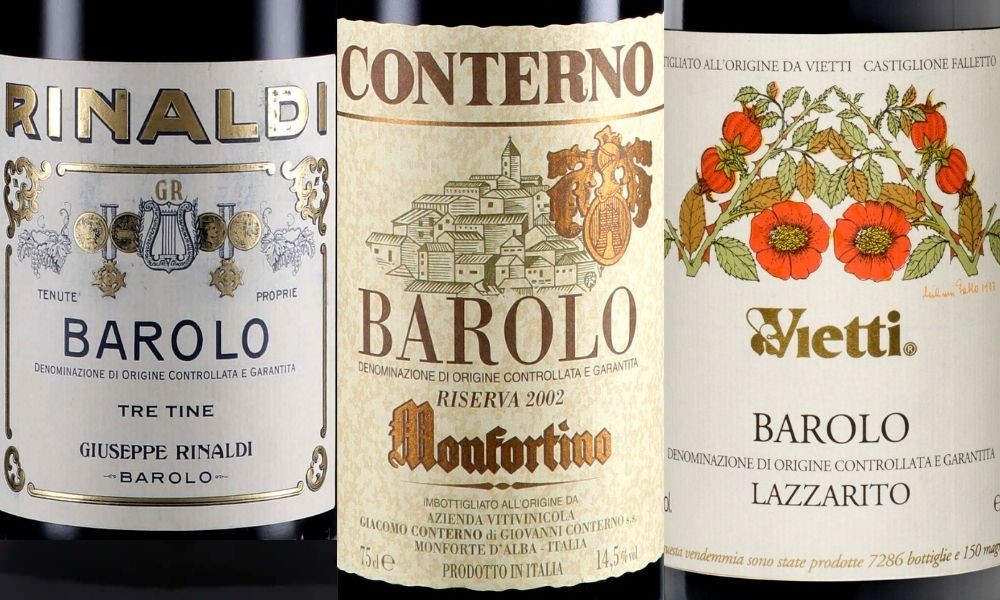 Among the ‘Piemontese’ DOCG wines, Barolo is certainly the most iconic. Barolo was born in the Langhe region in the 19th Century, from the vineyards of the Marquis Tancredi Falletti and Giulia Colbert Falletti of Barolo thanks to Paolo Francesco Staglieno, who produced the estate’s first dry version Nebbiolo in 1830 and thus became the pioneer of ‘Piemontese’ enology.
Among the ‘Piemontese’ DOCG wines, Barolo is certainly the most iconic. Barolo was born in the Langhe region in the 19th Century, from the vineyards of the Marquis Tancredi Falletti and Giulia Colbert Falletti of Barolo thanks to Paolo Francesco Staglieno, who produced the estate’s first dry version Nebbiolo in 1830 and thus became the pioneer of ‘Piemontese’ enology.
Barolo immediately became a noble and appreciated wine, so much so that it became the spokesman of Piedmont and the Savoy in all the courts of Europe, also thanks to the support of Count Camillo Benso di Cavour and King Vittorio Emanuele II.
This iconic red wine is produced in the Province of Cuneo, near Barolo, Castiglione Falletto and Serralunga d’Alba and in part of the municipalities of La Morra, Monforte d’Alba, Roddi, Verduno, Cherasco, Diano d’Alba, Novello and Grinzane Cavour.
Barolo is produced from 100% Nebbiolo grapes and requires a minimum aging of 38 months (18 of which in wood barrels). It can add the mention “Riserva” after 5 years of aging. It is considered one of the longest-lived wines in the world, thanks also to the strong tannic component of Nebbiolo, and is expressed differently according to the areas, crus and vintages.
Generally, it appears as a garnet red wine, with intense and elegant aromas of flowers and ripe fruit, often with tertiary notes of spices and tar. In the mouth it has great intensity and persistence, all accompanied by a great acid-tannic balance.
Perfect in combination with well-structured dishes, Barolo is also an excellent meditation wine – a wine to be appreciated on its own – especially if dated and of a good vintage.
BARBARESCO
 Among the ‘Piemontese’ DOCG wines, Barbaresco is one of the most famous and appreciated in the world. Barbaresco DOCG is a ‘Piemontese’ red wine typical of the Langhe, produced in the province of Cuneo in the municipalities of Barbaresco, Neive, Treiso and in the hamlet of “San Rocco” in the Province of Alba. The terroir of this DOCG is typically hilly with calcareous-clayey soils where Nebbiolo is raised by the espalier with Guyot pruning.
Among the ‘Piemontese’ DOCG wines, Barbaresco is one of the most famous and appreciated in the world. Barbaresco DOCG is a ‘Piemontese’ red wine typical of the Langhe, produced in the province of Cuneo in the municipalities of Barbaresco, Neive, Treiso and in the hamlet of “San Rocco” in the Province of Alba. The terroir of this DOCG is typically hilly with calcareous-clayey soils where Nebbiolo is raised by the espalier with Guyot pruning.
Barbaresco is another great expression of the Nebbiolo grape. It is produced from 100% Nebbiolo grapes and requires aging for 26 months, nine of which in barrels, and for at least 50 months to bear the mention “Riserva”.
Barbaresco, like Barolo, is a wine that fully reflects the terroir and expresses itself differently depending on the production area. It generally appears as a garnet red wine tending to orange with aging, with very intense and characteristic aromas. The taste is dry and harmonious, with balsamic tertiary notes, tar and roasting that develop with aging.
It is considered a roast wine par excellence, but it is also excellent in combination with typical ‘Piemontese’ dishes, and also with seasoned foods, mushrooms and truffles.
-
The Wines for Today’s Tasting
Wine #1. Bruno Giacosa, Roero Arneis, 2022
The Producer: Roero Arneis 2022 is a fine white wine produced by Bruno Giacosa.
 The wine:
The wine:
- Vintage – 2022
- 100% Arneis
- Roero Arneis DOCG
- The vines are quite vigorous, with strong, straight shoots. The grapes ripen in late September.
- Vinification: Stainless steel vats
- Length of fermentation: 25-30 days
- Refinement: 4 months in stainless steel vats + 1 month in bottle
- 4 months in steel barrels.
- 5 % APV
The Arneis grape variety is native to Piedmont region. This grape performs exceptionally well on the sandy hills of Roero, northwest of Alba. It is a very interesting expression of this often-underrated Piemontese grape variety, capable of expressing itself, with great elegance and minerality.
The Arneis grape vines thrive throughout the Roero region and on the hills along the right bank of the Tanaro River.
Historical Journey: Arneis grapes were cultivated in Roero since the 15th century, but the wine made from them gained prominence in the 1970s. It saved Roero Arneis from possible disappearance.
Tasting notes: Straw Yellow, aromas of fresh fruit, citrus, and often hints of almonds. On the palate, it is fresh, full-bodied, with mineral notes and a persistent finish. The mineral-rich soils contribute to its bone-dry character and fresh acidity.
Wine #2. Paitin Barbaresco Serraboella 2020
Producer: Azienda Agricola PAITIN di Pasquero Elia
 The wine:
The wine:
- 2020
- 100% Nebbiolo
- Barbaresco DOCG
- Organic with the sole use of sulfur and copper natural compound, manual or mechanic
- Vinification and Aging. Grapes are pressed and destemmed, then fermented and macerate for 3 to 6 weeks in stainless steel. Then it finishes the maceration with the ancient technique of the submerged cap. Aged in wood barrels for around 18 to 24 months. Barrels’ volume varies between 25 to 50 hectoliters, made of Slavonian and Austrian oak.
- Alcohol: 14.5%
Serraboella is the most famous Cru in the Southern Neive. A long hill exposed to West that gently bends towards South getting steeper. On this very side: the steepest and the warmest, this Barbaresco has a unique expression. The Paitin 2020 Barbaresco Serraboella is ethereal and luminous in appearance; however, the aromas offer strength and a bold character. This is an impeccably elegant wine.
Tasting notes. Ethereal and luminous, the wine presents itself with grace; the initial impression is of vibrant berry fruit. Beyond the fruit, there are savory notes of licorice and iris root. An intriguing touch of teakwood or mahogany adds depth. Impeccably elegant, it offers a harmonious interplay of power and volume.
Only 10,000 bottles of this exceptional Barbaresco were made.
The Paitin Barbaresco Serraboella 2020 embodies the essence of Piedmont’s winemaking heritage—a symphony of flavors and elegance.
Wine #3. T G.D. Vajra, Barolo ‘Albe’ 2019
The Producer: G.D. Vajra. The Vajra family has farmed Bricco delle Viole, the highest cru in Comune di Barolo, since the 1880s. At the young age of 15, Aldo Vajra embraced the dream to revive his family legacy. Displaying a vision and commitment belying his young age he took over the estate in 1968, turning a new page.
 The wine:
The wine:
- 2019
- 100% Nebbiolo
- Barolo DOCG
- Grapes cultivated in high elevation vineyards. This wine comes from three vineyards with different exposures to the sun: southeast, south and southwest, catching all morning sun rises. This combination is reflected in the freshness of the wine, complexity of flavors and relatively high tannins.
- Vinification and Aging: Grapes are harvested by hand with a rigorous grape selection process and then, in the winery, the best berries are re-selected. Fermentation is carried out at controlled temperature with a long maceration; as tradition dictates, the wine is aged for 36 months in large Slavonian oak barrels.
- 14.5% APV.
Tasting notes. The 2019 Barolo Albe features a classic blood red color, with a very lively core. Taste of red berries, raspberries, and red currants also display a layer of sweet spices. Aromas of fresh cherries, wild strawberries, rose- buds, wild herbs, underbrush. On the palate it showcases the tart red fruits Nebbiolo is known for, but at a higher gear followed by more savory flavors finishing with well-integrated tannins and vibrant acidity. The mouthfeel opens with a good balance, lots of energy and refined tannins, and the aftertaste echoes the aromatics with lingering complexity.
Wine #4. Paolo Scavino, Barolo ‘Prapò’, 2019
The Producer: Paolo Scavino (founded in 1921).
 The wine:
The wine:
- 2019
- 100% Nebbiolo
- Barolo DOCG
- Viticulture and aging: Fruit harvested by hand. Skin maceration for 12 days, followed by a 20–30-day fermentation in stainless steel with indigenous yeast.
- Aged in a combination of French barrique and large casks for 2 years prior to bottling.
- Alcohol: 14.5% APV.
Tasting Notes. The 2019 Paolo Scavino “Prapò” Barolo is a captivating wine from the Barolo region. With the black label, this wine draws its fruit from Serralunga d’Alba, or the village that usually reveals the most structured and muscular expressions of Nebbiolo. Indeed, it is a deep wine characterized by an intense garnet red color, the texture is dense, rich and its tannins have a full and round grain. The nose of this Barolo reveals intriguing notes of dark fruit like figs and black cherries, spicy notes such as nutmeg and black pepper. In the mouth, the Barolo Prapò is assertive and powerful, yet maintains an elegant balance.
It exemplifies rigor and consistency, showcasing the best of the Serralunga terroir. It is full- bodied and approachable, with refined, ripe tannins that gracefully embrace the pure fruitiness.
-
CV Members Rating (after the tasting)
References:
Https://winefolly.com/deep-dive/piedmont-wine-map-of-italy
https://www.italysfinestwines.it/en/piedmont-wines/
https://www.mtouton.com/products/italy/piemonte/roero/5256-2021/bruno-giacosa-roero-arneis
https://www.decantalo.com/us/en/g-d-vajra-barolo-albe.html
.o0o.
Laughing Matter
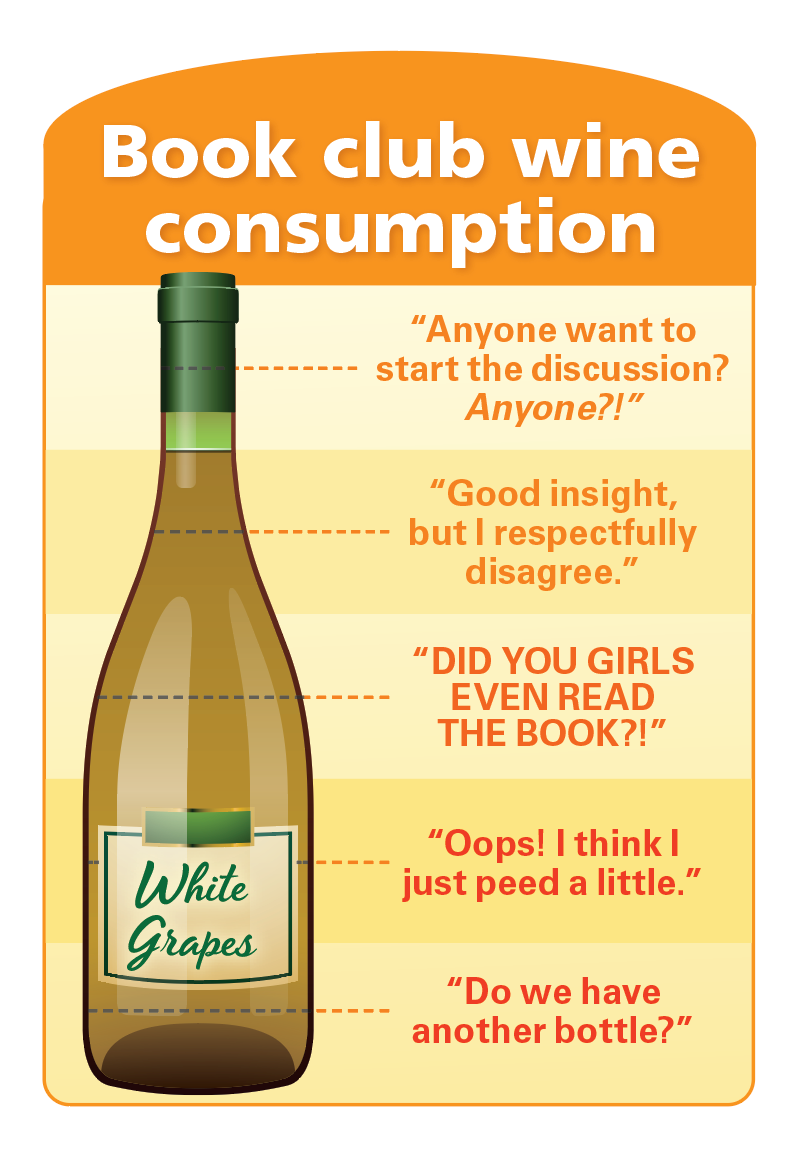
.o0o.
